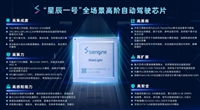IMP690A, 692A, 802L, 802M, 805L
Application Information
Watchdog Input
Table 1. Pin Connections in Battery Backup Mode
As discussed in the Reset section, the Watchdog Input is used to
monitor microprocessor activity. It can be used to insure that the
microprocessor is in a continually responsive state by requiring
that the WDI pin be toggled every second. If the WDI pin is not
toggled within the 1.6 second window (minimum tWD + tRS),
a reset pulse will be asserted to return the microprocessor to the
initial start-up state. Pulses as short as 50ns can be applied to the
WDI pin. If this feature is not used, the WDI pin should be open-
circuited or the logic placed into a high-impedance state to allow
the pin to float.
Pin
VOUT
VBATT
PFI
Connection
Connected to VBATT through internal PMOS switch
Connected to VOUT
Disabled
PFO
Logic-LOW
RESET Logic LOW (except on IMP805 where it is HIGH)
WDI Watchdog timer disabled
During the backup power mode, the internal circuitry of the
supervisory circuit draws power from the battery supply. While
CC is still alive, the comparator circuits remain alive and the cur-
rent drawn by the device is typically 35µA. When VCC drops more
than 1.1V below VBATT, the internal switchover comparator, the
PFI comparator and WDI comparator will shut off, reducing the
quiescent current drawn by the IC to less than 1µA.
Backup-Battery Switchover
A power loss can be made less severe if the system RAM contents
are preserved. This is achieved in the IMP690/692/802/805 by
switching from the failed VCC to an alternate power source con-
V
nected at VBATT when V is less than the reset threshold voltage
CC
(V < V ), and V is less than VBATT. The VOUT pin is normally
CC
RT
CC
connected to V through a 2Ω PMOS switch but a brown-out or
CC
Backup Power Sources - Batteries
loss of V will cause a switchover to VBATT by means of a 20Ω
CC
Battery voltage selection is important to insure that the battery
does not discharge through the parasitic device diode D1 (see
PMOS switch. Although both conditions (V < V and V <
CC
RT
CC
V
BATT) must occur for the switchover to VBATT to occur, V
will
OUT
Figure 4) when VCC is less than VBATT and VCC > V .
be switched back to VCC when VCC exceeds VRT irrespective of the
voltage at VBATT. It should be noted that an internal device diode
RT
Table 2. Maximum Battery Voltages
(D1 in Figure 4) will be forward biased if VBATT exceeds V by
CC
Part No.
IMP690A
IMP802L
IMP805L
IMP692A
IMP802M
MAXIMUM Battery Voltage
more than a diode drop when VCC is switched to VOUT. Because of
this it is recommended that VBATT be no greater than VRT +0.6V.
4.80
4.80
4.80
4.55
4.55
VBATT
VCC
SW1
SW2
D1 D2
SW3
SW4
Although most batteries that meet the requirements of Table 2 are
acceptable, lithium batteries are very effective backup source due
to their high-energy density and very low self-discharge rates.
IMP690A IMP802L
IMP692A IMP802M
IMP805L
D3
Battery Replacement while Powered
Batteries can be replaced even when the device is in a powered
state as long as VCC remains above the reset threshold voltage VRT.
In the IMP devices, a floating VBATT pin will not cause a power-
supply switchover as can occur in some other supervisory
circuits. If VBATT is not used, the pin should be grounded.
VOUT
CONDITION
SW1/SW2 SW3/SW4
VCC > Reset Threshold
Open
Open
Closed
Closed
V
CC < Reset Threshold and
VCC > VBATT
VCC < Reset Threshold and
VCC < VBATT
Closed
Open
IMP690A/IMP802L/IMP805L Reset Threshold = 4.65V
IMP692A/IMP802M Reset Threshold = 4.4V
690A_06.eps
Figure 4. Internal device configuration of battery
switch-over function
6










 三星深化印度制造布局,供应链本地化进程加速
三星深化印度制造布局,供应链本地化进程加速

 芯擎科技“星辰一号”自动驾驶芯片点亮成功,2025年量产在即
芯擎科技“星辰一号”自动驾驶芯片点亮成功,2025年量产在即

 纳微科技震撼发布GaNSlim革新氮化镓功率芯片
纳微科技震撼发布GaNSlim革新氮化镓功率芯片

 意法半导体发布第四代SiC技术,助力电动汽车电驱
意法半导体发布第四代SiC技术,助力电动汽车电驱
